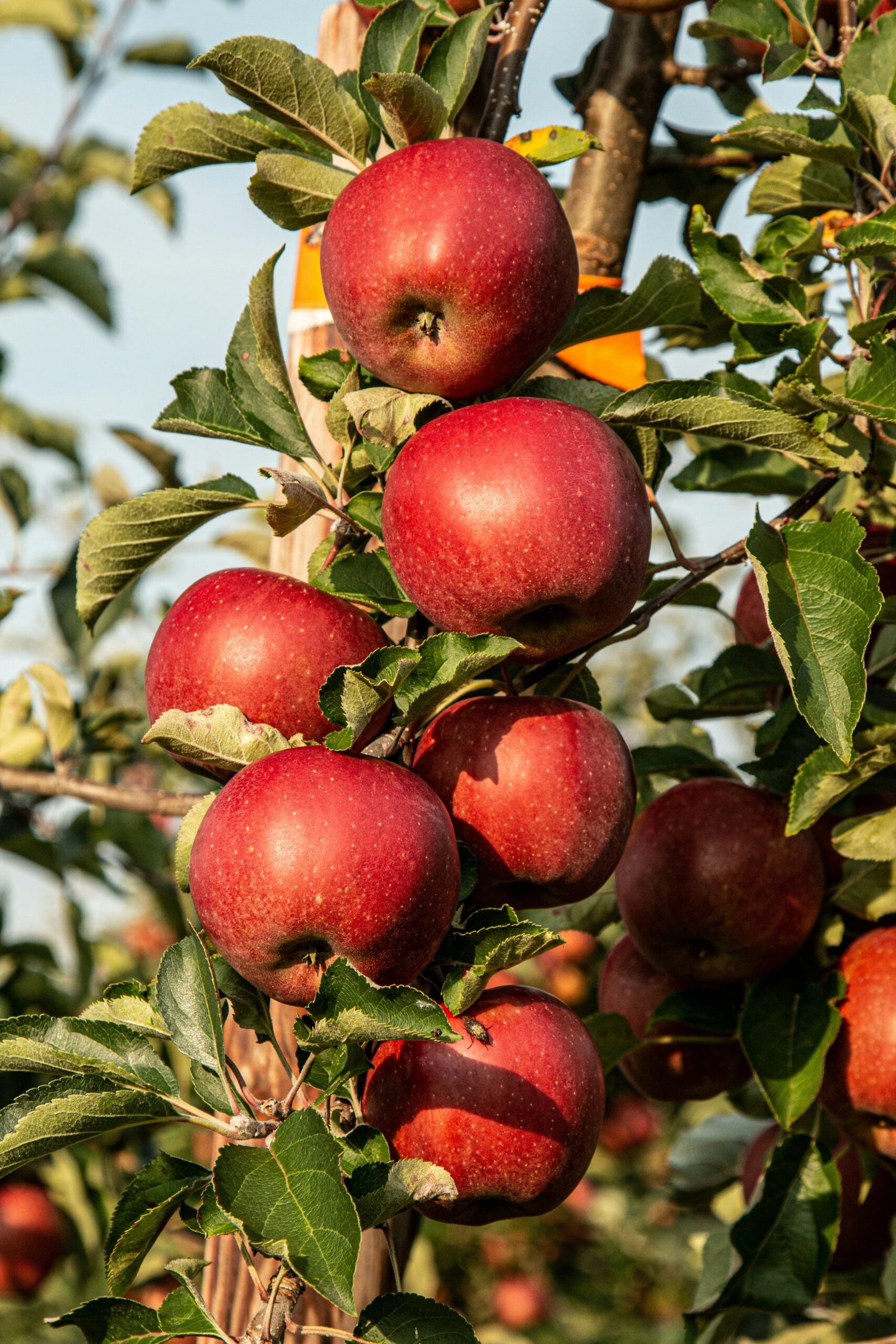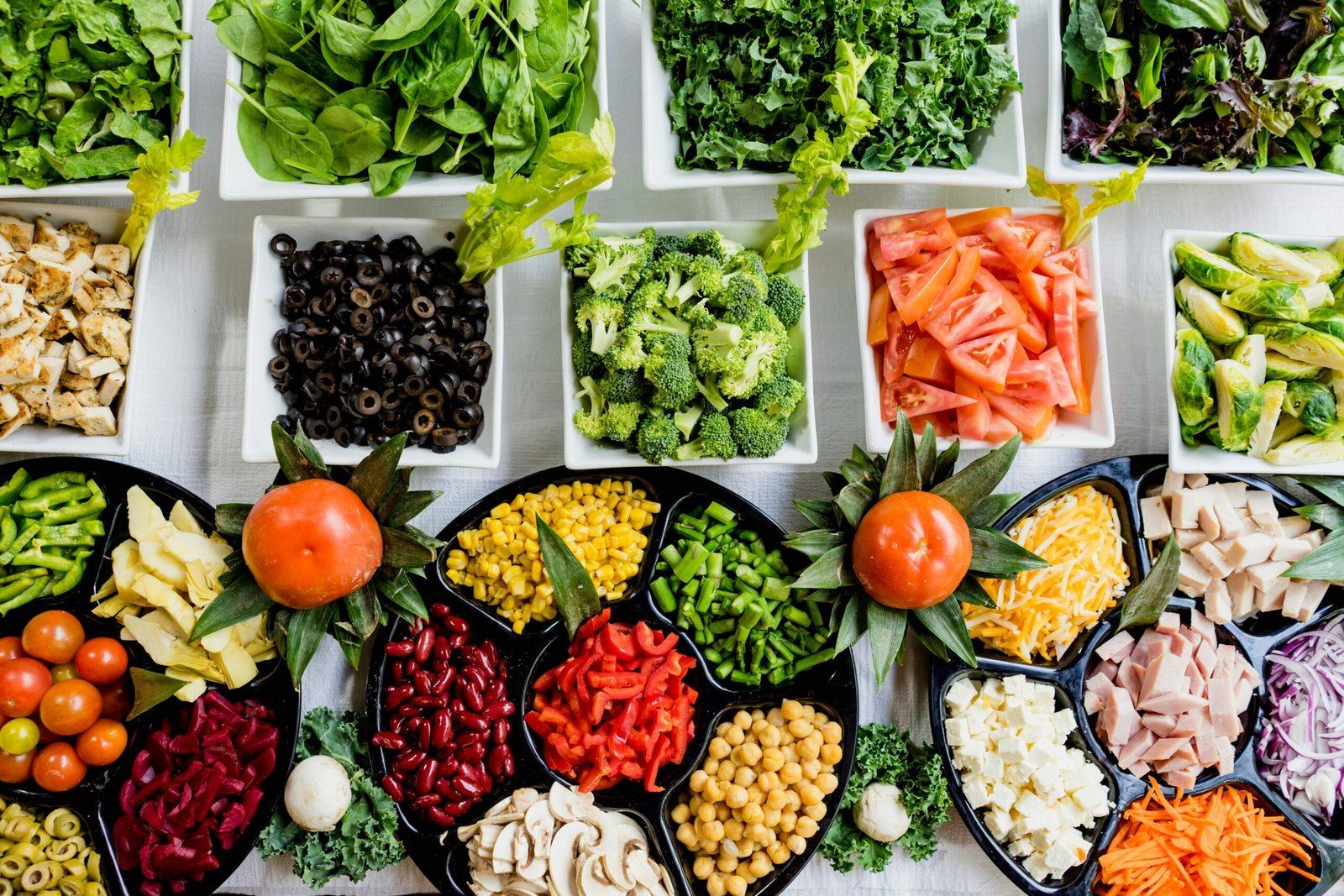
Introduction
Sourdough bread is a delicious and flavorful type of bread that is made using a fermented dough starter. However, if you don’t have a sourdough starter on hand, you can still make a delicious loaf of sourdough bread using buttermilk. In this blog post, we will explore the process of making sourdough bread with buttermilk, step by step.
Buttermilk is a tangy and creamy liquid that is left behind after churning butter from cream. It is commonly used in baking to add moisture and a subtle tang to various recipes. While it may seem unconventional to use buttermilk in sourdough bread, it actually adds a unique flavor profile and enhances the texture of the final product.
The process of making sourdough bread with buttermilk begins by creating a sourdough starter. This starter is a mixture of flour and water that is left to ferment for a period of time, allowing wild yeast and bacteria to develop. The fermentation process gives sourdough bread its distinct flavor and texture.
Once the sourdough starter is ready, it is combined with buttermilk, flour, salt, and a small amount of sugar to create the dough for the bread. The buttermilk not only adds flavor but also contributes to the moistness of the dough, resulting in a soft and tender loaf.
After the dough is mixed, it is left to rise for several hours, allowing the yeast to ferment and release carbon dioxide. This process creates air pockets in the dough, giving the bread its characteristic airy texture. The longer the dough is left to rise, the more pronounced the sourdough flavor will be.
Once the dough has risen, it is shaped into a loaf and placed in a preheated oven to bake. The high heat of the oven causes the dough to rise further and develop a golden crust. The buttermilk in the dough helps to create a beautiful crust that is slightly tangy and adds a depth of flavor to the bread.
When the bread is fully baked, it is removed from the oven and allowed to cool before slicing. The result is a loaf of sourdough bread with a tender crumb, a tangy flavor, and a crust that is both crispy and slightly chewy.
In conclusion, making sourdough bread with buttermilk is a unique and delicious twist on the traditional sourdough bread recipe. The buttermilk adds moisture, tang, and flavor to the bread, resulting in a loaf that is both satisfying and flavorful. So, if you find yourself without a sourdough starter, don’t fret. Give this buttermilk sourdough bread recipe a try and enjoy the delightful taste of homemade bread.
Ingredients
Before we dive into the process, let’s take a look at the ingredients you will need to make sourdough bread with buttermilk:
- 3 cups all-purpose flour
- 1 ½ cups buttermilk
- 1 teaspoon salt
- 1 teaspoon sugar
- 1 teaspoon baking soda
- 1 cup sourdough starter
- 1 tablespoon olive oil
- Optional toppings: sesame seeds, poppy seeds, or sea salt
In addition to the basic ingredients, you can also customize your sourdough bread with various add-ins such as herbs, cheese, or nuts. These additional ingredients will add flavor and texture to your bread, making it even more delicious.
It’s important to note that the quality of your ingredients will greatly affect the final outcome of your sourdough bread. Using high-quality flour and buttermilk will result in a better-tasting and more nutritious bread. Additionally, using a homemade sourdough starter will give your bread a unique flavor and improve its overall quality.
Now that we have all the ingredients ready, let’s move on to the step-by-step process of making sourdough bread with buttermilk.
The instructions for this task are quite straightforward. In order to successfully complete it, you need to follow a few key steps. Firstly, you should carefully read the provided paragraph and understand its context. This will help you to ensure that your extension is relevant and aligned with the overall message of the larger text.
Once you have a clear understanding of the paragraph, it’s time to start expanding on it. To do this effectively, you should consider the purpose of the larger text and the audience it is intended for. Are you writing a persuasive article for a general audience, or a technical document for experts in a specific field? This will help you determine the tone, style, and level of detail to include in your extension.
In addition to considering the purpose and audience, it’s important to maintain the flow and coherence of the larger text. Your extension should seamlessly integrate with the existing paragraph and contribute to the overall message. To achieve this, you can use various techniques such as providing examples, offering counterarguments, or presenting additional evidence to support the main point.
Furthermore, it is crucial to ensure that your extension is well-structured and organized. This means using appropriate headings, subheadings, and paragraphs to clearly present your ideas. You can also use bullet points or numbered lists to break down complex information and make it easier for the reader to follow.
Lastly, don’t forget to proofread and edit your extension before finalizing it. This will help you identify any grammatical or spelling errors, as well as improve the clarity and coherence of your writing. Taking the time to revise your work will ensure that your extension is polished and professional.
By following these instructions and approaching the task with a thoughtful and strategic mindset, you will be able to successfully extend the provided paragraph and contribute to the larger text in a meaningful way. Remember to stay focused, be specific, and provide relevant and valuable information to engage and inform your readers.
Step 1: Mixing the Dough
In a large mixing bowl, combine the all-purpose flour, salt, and sugar. Mix well to ensure that the dry ingredients are evenly distributed.
To begin the process of making the perfect dough, it is important to follow the steps carefully. Start by selecting a large mixing bowl that can accommodate all the ingredients comfortably. This will allow for easy mixing and prevent any spillage.
Next, measure out the required amount of all-purpose flour. It is crucial to use the correct measurement to ensure the dough turns out just right. Too much flour can result in a dry and crumbly texture, while too little can make the dough too sticky and difficult to work with.
Once the flour is measured, add it to the mixing bowl. Then, add the salt and sugar. These ingredients not only enhance the flavor of the dough but also help to activate the yeast. Mixing the dry ingredients together ensures that they are evenly distributed throughout the dough, resulting in a consistent taste and texture.
To mix the ingredients, use a large spoon or a whisk. Start by gently stirring the dry ingredients together, making sure to break up any clumps of flour or sugar. As you continue to mix, increase the speed and force of your stirring, ensuring that all the ingredients are thoroughly combined. This will create a uniform mixture that will serve as the foundation for your dough.
It is important to note that mixing the dough too vigorously can result in overdeveloped gluten, which can make the dough tough and chewy. To avoid this, be mindful of your mixing technique and adjust the speed and force accordingly.
Once the dry ingredients are well mixed, you can proceed to the next step of the dough-making process. Mixing the dough is just the beginning, and there are several more steps to follow before you can enjoy the final product.
Step 2: Adding the Buttermilk
Slowly pour the buttermilk into the dry ingredients while stirring with a wooden spoon or your hands. As you pour, you’ll notice the dry ingredients absorbing the buttermilk, creating a sticky and slightly wet dough. The buttermilk adds a tangy flavor and helps to activate the baking soda, which will give the biscuits a light and fluffy texture.
It’s important to pour the buttermilk slowly to ensure that it is evenly distributed throughout the dough. This will help to prevent any dry pockets of flour and ensure that the biscuits bake evenly. As you stir, you’ll feel the dough becoming more cohesive and easier to work with.
If you prefer, you can use your hands to mix the dough. This can be a messy process, but it allows you to feel the texture of the dough and ensure that all the ingredients are fully incorporated. Just be sure to wash your hands thoroughly before and after working with the dough.
Once the buttermilk has been added and the dough is well mixed, you can move on to the next step in the biscuit-making process. Whether you’re making traditional round biscuits or experimenting with different shapes and sizes, this versatile dough is ready to be shaped and baked to perfection.
Step 3: Kneading the Dough
Transfer the dough onto a lightly floured surface and knead for about 5-10 minutes. The dough should become smooth and elastic.
Kneading the dough is an essential step in bread-making. It helps to develop the gluten in the dough, which gives bread its structure and chewiness. As you begin kneading, you’ll notice that the dough is quite sticky. That’s completely normal, and the flour on the surface will help prevent it from sticking to your hands or the counter.
To start, use the heel of your hand to push the dough away from you. Fold it back onto itself and rotate it a quarter turn. Repeat this motion, pushing, folding, and rotating, for about 5-10 minutes. It may seem like a long time, but this process is crucial for developing the gluten.
As you continue kneading, you’ll notice that the dough gradually becomes smoother and more elastic. This is a result of the gluten strands strengthening and stretching. You’ll also notice that the dough becomes less sticky and easier to work with.
It’s important to maintain a gentle but firm pressure while kneading. Avoid using too much force, as it can tear the gluten strands and result in a dense loaf. If the dough starts to stick to your hands or the counter, lightly dust it with flour. However, be careful not to add too much flour, as it can make the dough dry and tough.
The exact kneading time may vary depending on the recipe and the type of bread you’re making. Some breads require a longer kneading time to develop a strong gluten structure, while others may need less. As a general guideline, aim for a smooth and elastic dough that springs back when lightly pressed with your finger.
Once you’ve finished kneading, shape the dough into a ball and place it in a greased bowl. Cover it with a clean kitchen towel or plastic wrap and let it rise until it has doubled in size. This process, known as proofing, allows the yeast to ferment the sugars in the dough, resulting in a flavorful and airy bread.
Remember, kneading is a skill that improves with practice. Don’t be discouraged if your first attempts don’t yield perfect results. With time and experience, you’ll become more familiar with the feel and texture of properly kneaded dough. So roll up your sleeves, get your hands in the flour, and enjoy the therapeutic process of kneading the dough.
Step 4: Resting the Dough
Place the kneaded dough back into the mixing bowl and cover it with a clean kitchen towel. Allow the dough to rest for at least 8 hours, or overnight. This resting period will give the dough time to ferment and develop its sourdough flavor.
During this resting period, the natural yeast present in the dough will begin to ferment the sugars, producing carbon dioxide gas. This gas is what gives sourdough its characteristic airy texture and tangy flavor. The longer the dough rests, the more pronounced the sourdough flavor will become.
While the dough is resting, it is important to keep it in a warm and draft-free environment. This will help the fermentation process proceed at an optimal pace. Many bakers choose to place the dough in a slightly warmed oven or on a countertop away from any cold drafts.
As the dough rests, you may notice that it starts to rise and double in size. This is a sign that the fermentation process is underway. The carbon dioxide gas being produced by the yeast is causing the dough to expand. The longer you let the dough rest, the more it will rise.
During this time, the gluten in the dough will also continue to develop. Gluten is a protein that gives bread its structure and elasticity. As the dough rests, the gluten strands will become stronger and more elastic, allowing the bread to rise properly during baking.
When the resting period is complete, you will notice that the dough has become lighter and more airy. It will also have a slightly sour smell, indicating that the fermentation process has been successful. At this point, the dough is ready to be shaped and baked.
It is important to note that the resting period can vary depending on the temperature of your kitchen and the strength of your sourdough starter. If you live in a warmer climate, the dough may ferment more quickly. Conversely, if your kitchen is cooler, the fermentation process may take longer.
The key is to be patient and allow the dough to rest for the recommended time. This will ensure that the flavors have fully developed and that the bread will have the desired texture and taste. So resist the temptation to rush the process and let the dough rest undisturbed.
In conclusion, the resting period is a crucial step in sourdough bread making. It allows the dough to ferment, develop its flavor, and strengthen its gluten structure. By giving the dough ample time to rest, you will be rewarded with a delicious and flavorful loaf of sourdough bread.
Step 5: Shaping the Loaf
After the resting period, the dough should have risen and become more elastic. This is the perfect time to shape it into a beautiful loaf that will have a delightful texture and appearance. To begin, lightly flour a clean surface, such as a countertop or a large cutting board, to prevent the dough from sticking.
Gently transfer the dough from the bowl onto the floured surface. Be careful not to deflate it too much, as you want to preserve the air bubbles that have formed during the fermentation process. Now, using your hands, start shaping the dough into a loaf. There are several techniques you can use depending on the desired shape of your bread.
If you prefer a rustic, artisan-style loaf, you can shape the dough into a round or oval shape. To do this, gently pull the edges of the dough towards the center, rotating it as you go. Continue this process until you have a smooth, taut surface. This technique is often referred to as “free-form shaping” and allows the dough to expand and rise in a more natural, irregular manner.
On the other hand, if you prefer a more uniform shape, you can use a bread tin or a banneton basket. A bread tin will give your loaf a classic rectangular shape, while a banneton basket will create a beautiful spiral pattern on the crust. To shape the dough using a tin or a basket, gently flatten the dough into a rectangle and then roll it tightly from one end to the other. Place the shaped dough into the greased tin or dusted banneton basket, making sure it is evenly distributed.
Once you have shaped the dough, cover it with a clean kitchen towel or a plastic wrap and let it rest for a final proofing. This final resting period allows the dough to relax and rise slightly before baking. The duration of the proofing time will depend on the recipe you are following, but it is typically around 30 minutes to an hour.
While the dough is proofing, preheat your oven to the desired temperature. This will ensure that the oven is hot enough to create a beautiful crust and that the bread bakes evenly. It is also a good idea to place a baking stone or a baking tray in the oven during the preheating process. This will help to create a more consistent temperature and provide a better baking environment for your bread.
Once the dough has finished its final proofing and the oven is preheated, it is time to bake your loaf. Gently transfer the shaped dough onto a baking tray or a preheated baking stone. If you are using a tin, you can simply place the tin in the oven. Be careful not to handle the dough too roughly, as this can cause it to deflate and lose its shape.
Close the oven door and let the magic happen. As the bread bakes, it will rise further, develop a beautiful golden crust, and fill your kitchen with the irresistible aroma of freshly baked bread. The baking time will vary depending on the size and shape of your loaf, but it is typically around 30 to 40 minutes.
Once the bread is done baking, carefully remove it from the oven using oven mitts or a thick kitchen towel. Transfer it to a wire rack to cool completely before slicing. This is an essential step, as cutting into a hot loaf can result in a gummy texture and uneven slices.
Now, you can finally enjoy the fruits of your labor. Whether you prefer a simple slice with butter or a gourmet sandwich, your homemade bread will be a delicious and satisfying treat. So, take a moment to appreciate the aroma, the texture, and the taste of your freshly baked loaf. You have successfully completed the journey from flour and water to a masterpiece of bread-making.
Step 6: Second Rise
Place the shaped dough onto a baking sheet lined with parchment paper. Cover it with a kitchen towel and let it rise for another 2-3 hours. This second rise will help the dough to become lighter and more airy.
During this second rise, the yeast in the dough continues to produce carbon dioxide, which creates bubbles and expands the dough. As the dough rises, the gluten strands stretch and become more elastic, allowing the dough to hold more air. This process is essential for achieving a light and airy texture in the final baked product.
While the dough is undergoing its second rise, it is important to create an optimal environment for fermentation. Keep the dough in a warm, draft-free area, ideally around 75-80°F (24-27°C). This temperature range encourages the yeast to work at an optimal rate, resulting in a well-risen and flavorful bread.
The duration of the second rise can vary depending on various factors such as the ambient temperature, the type of yeast used, and the specific recipe. It is crucial to monitor the dough closely during this stage to avoid overproofing, which can lead to a collapsed and dense loaf. The dough should approximately double in size and feel soft and pillowy to the touch when gently pressed with a fingertip.
While waiting for the dough to rise, take this opportunity to preheat your oven to the desired baking temperature. This ensures that the oven is adequately heated and ready to go once the dough has completed its second rise.
After the dough has risen for the recommended time, it is ready to be baked. Gently remove the kitchen towel and transfer the baking sheet to the preheated oven. The heat of the oven will cause the yeast to become more active, resulting in additional expansion and a beautifully risen loaf.
By following this crucial step of allowing the dough to undergo a second rise, you are ensuring that your bread will have a light and airy texture, with a well-developed flavor. The patience and attention to detail required during this stage will be rewarded with a delicious homemade bread that is sure to impress.
Step 7: Preparing the Oven
Preheat your oven to 450°F (230°C) and place a baking dish filled with water on the bottom rack. This will create steam in the oven, which will help to achieve a crispy crust on the bread.
Once the oven is preheated, it’s important to make sure it is at the right temperature before you start baking your bread. A reliable oven thermometer can help you ensure that the temperature is accurate. This is crucial because baking bread requires precise temperature control for optimal results.
While the oven is preheating, take this time to prepare your baking surface. If you are using a baking stone or a baking sheet, make sure it is clean and dusted with flour or cornmeal to prevent the dough from sticking. If you are using a Dutch oven or a bread cloche, preheat it in the oven along with the baking dish filled with water.
The baking dish filled with water serves two purposes. First, it creates steam, which is essential for achieving a crispy crust on the bread. The steam helps to keep the surface of the dough moist during the initial stages of baking, allowing the bread to rise properly and develop a beautiful crust. Second, the water in the baking dish helps to regulate the temperature in the oven, preventing it from getting too hot and burning the bread.
When placing the baking dish filled with water on the bottom rack, be careful not to spill any water on the oven floor or heating elements. This can cause the oven to smoke or even start a fire. It’s a good idea to use a deep baking dish or a roasting pan to hold the water, ensuring that it doesn’t overflow or evaporate too quickly during the baking process.
Once the oven has reached the desired temperature and the baking dish is in place, it’s time to transfer your bread dough onto the prepared baking surface. Gently place the dough onto the baking stone, baking sheet, or into the preheated Dutch oven or bread cloche. Be cautious not to burn yourself in the process, as the oven and baking surface will be extremely hot.
Close the oven door quickly to trap the steam inside and start the baking process. The steam will help create a moist environment, allowing the bread to rise and develop a beautiful crust. The high temperature of the oven will also cause the dough to expand rapidly, resulting in a light and airy texture.
It’s important to resist the temptation to open the oven door during the first few minutes of baking. Opening the door too early can cause the steam to escape, resulting in a less crispy crust. It’s best to wait until the bread has had a chance to set and develop a firm crust before checking on its progress.
Now that the oven is properly prepared and the bread is baking, you can sit back and enjoy the tantalizing aroma that will fill your kitchen. The next step is to wait patiently for the bread to bake to perfection, which can take anywhere from 20 to 40 minutes, depending on the size and type of bread you are baking.
During the baking process, it’s a good idea to keep an eye on the bread to ensure that it doesn’t burn. If you notice the crust getting too dark too quickly, you can lower the temperature of the oven slightly or cover the bread with aluminum foil to prevent further browning.
Once the bread is fully baked, it’s time to take it out of the oven and let it cool. Use oven mitts or heat-resistant gloves to protect your hands from the hot baking surface. Carefully transfer the bread to a wire rack to cool completely before slicing and serving.
Now that you know how to properly prepare your oven for baking bread, you can confidently embark on your bread-making journey. With practice and patience, you’ll soon be able to enjoy homemade bread that rivals that of a professional bakery. So, roll up your sleeves, gather your ingredients, and let the baking begin!
Step 8: Baking the Bread
Once the oven is preheated and the dough has completed its second rise, it is time to bake the bread. Baking is the final step in the bread-making process, where the dough transforms into a delicious golden loaf with a crusty exterior and a soft, fluffy interior.
To ensure that your bread bakes evenly and develops a beautiful golden color, it is important to preheat the oven to the correct temperature. This allows the bread to start baking immediately, creating a burst of heat that helps the yeast continue to ferment and produce carbon dioxide, giving the bread its airy texture.
Once the oven is preheated, carefully transfer the baking sheet with the risen dough into the oven. It is essential to handle the dough gently to avoid deflating it. The hot oven provides the ideal environment for the yeast to work its magic, causing the bread to rise even further and develop a desirable texture.
The baking time for bread can vary depending on the recipe and the size of the loaf. In this case, bake the bread for 30-35 minutes, or until it is golden brown and sounds hollow when tapped on the bottom. The golden color indicates that the bread has developed a caramelized crust, which adds flavor and visual appeal to the finished loaf.
Listening for a hollow sound when tapping the bottom of the bread is another way to determine if it is fully baked. If the bread sounds dense or doughy, it may need a few more minutes in the oven. However, be careful not to overbake it, as this can result in a dry and tough loaf.
Once the bread is baked to perfection, carefully remove it from the oven and place it on a wire rack to cool. This allows the air to circulate around the bread, preventing the bottom from becoming soggy. It is important to resist the temptation to slice into the bread immediately, as it needs time to cool and set before it can be enjoyed.
Baking bread is a satisfying and rewarding process that requires patience and attention to detail. By following these steps and techniques, you can create a homemade loaf that rivals the ones you find in bakeries. So, go ahead, preheat your oven, and get ready to savor the aroma of freshly baked bread wafting through your kitchen.
Step 9: Cooling and Enjoying
Remove the bread from the oven and let it cool on a wire rack for at least 30 minutes before slicing. This will allow the bread to set and prevent it from becoming too gummy. Once cooled, slice the bread and enjoy it with your favorite spreads or use it to make sandwiches.
After patiently waiting for the bread to cool, you can finally indulge in the delicious aroma and taste of your homemade creation. As you transfer the bread from the hot baking pan to the wire rack, you can’t help but admire the golden crust and the soft, fluffy texture. The cooling process is essential as it allows the bread to firm up and develop the perfect consistency.
While the bread cools, you can take a moment to gather your favorite spreads and toppings. Whether you prefer classic choices like butter and jam or more adventurous options like avocado and smoked salmon, the possibilities are endless. The freshly baked bread will provide the perfect canvas for your culinary creativity.
Once the bread has cooled for the recommended time, you can carefully slice it into thick or thin pieces, depending on your preference. The knife glides effortlessly through the loaf, revealing the tender crumb and the satisfying crunch of the crust. The anticipation builds as you select your first slice, and you can’t help but marvel at your accomplishment.
As you take that first bite, you are greeted with a burst of flavor and a satisfying chew. The bread is perfectly balanced, with a subtle sweetness and a hint of saltiness. The texture is light and airy, yet substantial enough to hold up to your favorite toppings. Each bite is a delightful combination of flavors and textures, making it difficult to resist reaching for another slice.
The versatility of homemade bread is unmatched. You can enjoy it as a simple snack, slathered with butter and paired with a cup of tea. Or you can elevate it to the next level by transforming it into a gourmet sandwich, layered with your favorite meats, cheeses, and vegetables. The possibilities are endless, and each bite is a reminder of your culinary prowess.
So, take a moment to savor the fruits of your labor. Share the bread with loved ones, or savor it all to yourself. As you enjoy each slice, you can’t help but feel a sense of pride and accomplishment. Your journey from mixing the ingredients to pulling the perfectly baked bread out of the oven has resulted in a culinary masterpiece that is both delicious and satisfying.







